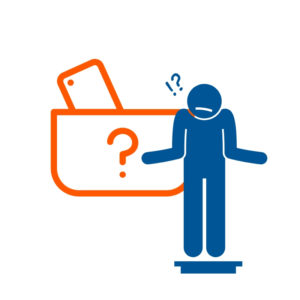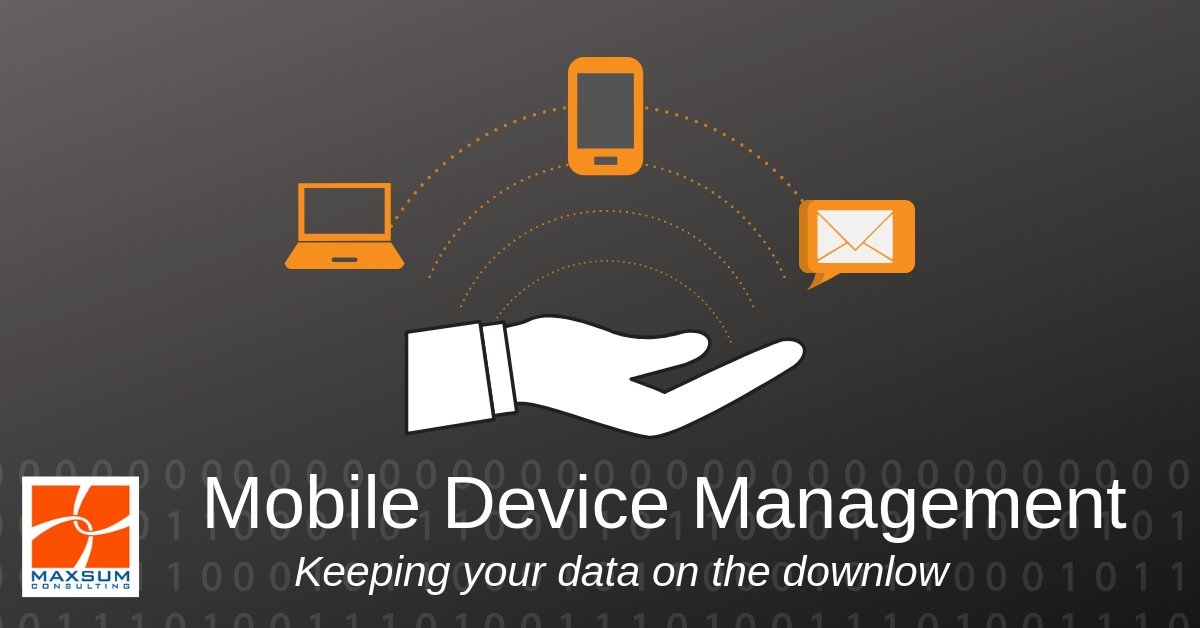Don’t want your company data to go viral? Mobile device management will make sure it doesn’t!
Getting something to “go viral” is undoubtedly the holy grail of social media success! Maximum reach and hopefully maximum impact. Our devices and digital platforms are intuitively designed to help us share, post, communicate and collaborate without limit, but while that maybe be great for your most recent dancing cat video, it’s not so great for sensitive company data your team members might access or store on their devices.
As our digital perimeters have expanded ever outwards, lots of your company data is most likely available to anyone who has access to it via their mobile device, wherever they may be. Big tick for productivity and collaboration for sure! But maybe not so great if it’s the wrong person reading it, right?
It’s precisely at the unchartered edges of your digital perimeter where the downsides of our voracious uptake of mobile devices, business’ move to bring your own device (BYOD) work practices, and the growing impact of data breaches on businesses intersect.
Read now: Is your “digital perimeter” ready for a mobile workforce?
No company likes the idea that their company data could be out there for anyone to access – it’s sensitive stuff! You want to ensure your team has the flexibility to work productively in a cloud-first, mobile-first world, but maintain tight control over your data at the same time. Enter Mobile Device Management.
Why Mobile Device Management, or MDM, is important in a Mobile & BYOD world
If your people can access your organisation’s network, systems or files from their mobile device, then this poses a risk to security. Consider for a moment what would happen if that data-rich, access-enabled mobile device is:
- Lost or stolen?
- Retained “as-is” by an ex-employee after they’ve left the company?
- In the possession of a disgruntled employee?
- Easily “hackable” (possibly unsecured with no PIN, password or fingerprint protection in use) by someone tech-savvy who get their hands on it?
In any of these scenarios, MDM gives an organisation the ability to remotely wipe company data and revoke permissions from devices, effectively blocking any further or unauthorised access.
What’s more, as the bad guys get better at better at finding ways to hack and access mobile devices remotely, in theory, even a mobile device in the right hands can pose as a risk. If you suspect a data breach and the likely culprit is a mobile device, then MDM can wipe and block access immediately.
MDM is another essential protective agent in your corporate security stack needed to ensure your organisation’s data remains secure.
Why MDM is now more important than ever in an NDB & Data Breach world.
It’s one year on since Australia rolled out the Notifiable Data Breaches scheme, mandating the notification and reporting of data breaches that meet certain criteria by businesses to the Office of the Australian Information Commissioner (OAIC) and affected parties.
Read now: The Notifiable Data Breaches Scheme – Response Planning 101
The explosion in cybercrime targeting business means more and more businesses are exposed to data breaches, and are spending inordinate amounts of time, resources, and money remediating, documenting and, where necessary, reporting their data breaches. As a Managed IT Services provider, we see businesses being blindsided by unauthorised access and data breaches all the time, and a pervasive lack of awareness, even still, one year on from the introduction of the NDB Scheme.
MDM offers a powerful tool for your data breach response toolkit, in that it offers companies a means of quickly and effectively halting any potential access to company data via a mobile device that may have fallen into the wrong hands.
Take the advice offered by the Office of the Australian Information Commissioner themselves on recommended steps to take in the event of a known and suspected data breach.
“An entity’s first step should be to contain a suspected or known breach where possible. This means taking immediate steps to limit any further access or distribution of the affected personal information, or the possible compromise of other information.
Where possible, an entity should take steps to reduce any potential harm to individuals.
This might involve taking action to recover lost information before it is accessed or changing access controls on compromised customer accounts before unauthorised transactions can occur. If remedial action is successful in making serious harm no longer likely, then notification is not required and entities can progress to the review stage.”
Implementing and using MDM as an effective part of your data breach response process will save your business time, resources, money and even your reputation.
The Top Three MDM Use Cases

An employee leaves your business. An employee with email access and company data stored on their phone /device will retain access to that data even after they leave the company unless it can be disabled and wiped. Implement MDM and build it into your staff off-boarding process to ensure that departing staff are not taking your data with them!

An employee loses their device, or it’s stolen. Tablets and phones are left on trams, in seatbacks of planes, stolen from cars, etc. all the time! As soon as an employee reports their device lost or stolen, MDM allows you to wipe and essentially neutralise access to your company data via that device.

The case of disgruntled current or ex-employees. Nobody likes to think we have unhappy players on our teams, but you know – sometimes it happens. Just think about the financial or reputational damage someone who does not have your company’s best interests at heart could elicit. Engaged in a dispute with an ex-employee? In the unfortunate position of having to make immediate staff cuts or redundancies? You’ll want MDM in your corner.
Important Considerations for Implementing MDM: Getting IT right!
We bet you’re pretty much convinced of the value of MDM by now, but as with all new technology, it takes planned and careful consideration in its implementation to be effective.
In planning to implement MDM, your company will need to build out some processes to support its use including:
- Policies: Formalised policies for both BYOD and the management of business owned devices.
- Processes: Clearly documented data breach response processes that include in what circumstances MDM is to be utilised and upon who’s command.
- Buy-in: Robust communications and change management programs for staff, as MDM will require users to agree to have MDM tools and apps installed on their devices.
- Consent: A review of your employee agreements to ensure that staff are informed and agree to your MDM policies up front.
Give us a call on 1300 629 786 today talk to us at Maxsum about planning and implementing MDM, as well as any of our other offerings across our MaxSec suite of security products. Contact Us!

